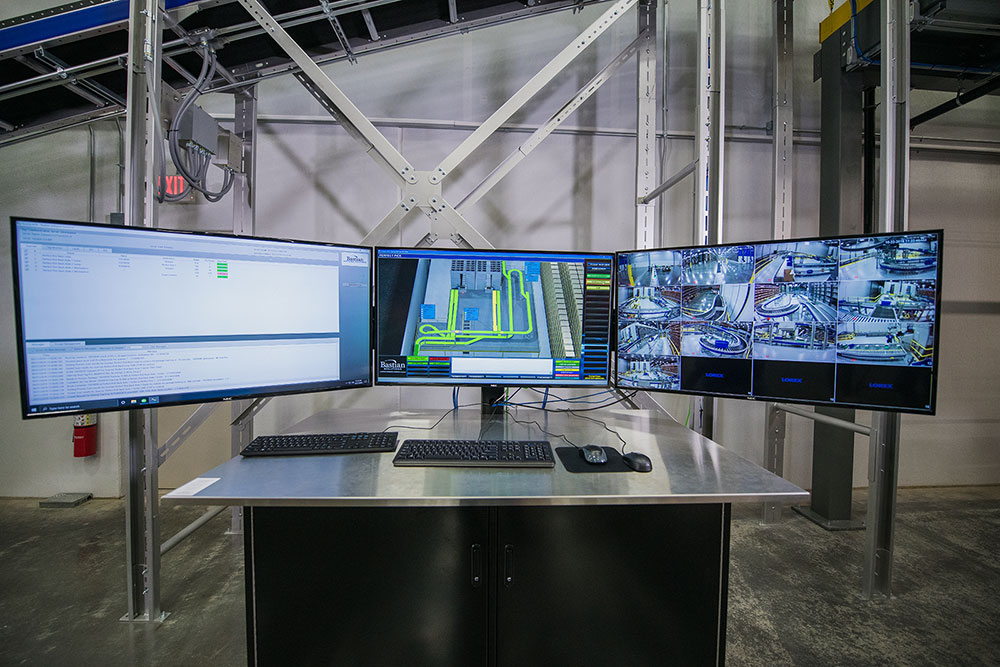
Warehouse Execution Systems: Orchestrating Operations and Enabling Future Automation
Kevin Niehoff | 25 January 2023
The term ‘Warehouse Management System’ (WMS) is synonymous with the management of operations within a distribution center. But there can be gaps within the WMS’s broad scope that require another layer of integration to truly allow the system to operate as designed, especially when it comes to automation. Warehouse Execution Systems (WES) have been created to operate under the WMS to help fulfill business needs not easily managed by the WMS. In fact, it is a crucial element to enabling more automation in warehouse operations.
What is a WES?
A WES can be thought of as a hybrid software platform with varying degrees of traditional WMS and WCS (Warehouse Control System) scope to assist in orchestrating distribution processes. With its increased popularity in modern warehouses, understanding the functionality of a WES can help identify which software package is right for your operation.
A WES operates as an intermediary between a WMS and physical warehouse processes, or even a WCS. WES's can manage all material handling equipment processes controlled by a WCS, while also being able to facilitate work under the WMS to synchronize operations. A key benefit of implementing a WES into a distribution process is work and resource balancing.
WES Functionality
A WES is particularly impactful because it can touch all phases of a distribution process to varying degrees. To maximize benefits of a WES in your warehouse, it should be determined what processes can be improved with WES capabilities, and what functionality can be leveraged from the existing WMS.
Inbound
Basic processes within receiving can be managed by a WES as well as the sortation and routing in inbound product. A WES can also direct replenishment processes or execute them with direction from the WMS.
Outbound
From an outbound perspective, a WES can manage picking, packing, and shipping processes (automatic or manual) and integrate with Goods-to-Person technology ranging from manual RF picking to more advanced automation like an AutoStore. Order wave and labor management can be included in the WES scope as well as QC processing. Sortation and routing can be included in WES functionality and be managed or executed with direction from the WMS. WES applications can also manifest or integrate with a 3rd party manifest engine, print and apply, and generate container labels or other contents.
Inventory Control
WESs are capable of cycle counting within a pick module (Goods-to-Person, manual, etc.) by either creating cycle counts or executing them based on orders from WMS. A WES can also manage inventory at the bin level within those systems and export adjustments to the WMS.
Reporting
Since a WES can be integrated to multiple warehouse processes, it can generate holistic reports of the system for general or performance metrics. This includes real-time reports or dashboards pertaining to the pre-existing system or any third-party technology added and managed by the WES.
Not only can a WES manage each of these operations, but a hardware agnostic WES can also integrate with various technologies from any material handling equipment manufacturer. This feature enables companies to choose technology and processes that work best for their business goals. Adding further functionality to warehouse operations is streamlined with a WES too. For example, a new GTP system that replaces manual picking can be up and running by simply adding a standard software module to the WES.
When to implement a WES?
The primary role of a WES is to supplement the existing WMS and provide the customer flexibility as they won’t be confined to the business rules of one software integrator. Common reasons companies choose to install a WES into their operation include benefitting from added functionality that the WMS cannot provide or utilizing the WES to integrate with third-party technology that is not accessible with the WMS.
While it might make sense to simply upgrade the WMS to accommodate business requirements, these upgrades can be difficult to procure due to circumstances such as cost, limited WMS functionality, or lack of support for an older WMS system. A WES can limit risk within the system by providing proven integrations with third-party technology and eliminating the need for extensive custom WMS development.
Kevin is a Logistics Consultant for Bastian Solutions in the software division located in Louisville, Kentucky. He earned his Bachelor of Science in Industrial Engineering from the University of Louisville. Kevin has experience designing warehouse control and execution systems for his customers. Systems include integration with highly automated goods to person technology, conveyor routing and more.
Comments
No comments have been posted to this Blog Post
Leave a Reply
Your email address will not be published.
Comment
Thank you for your comment.